The seven volcanic islands in the north-east of Sicily have been on the UNESCO World Heritage List since December 2000.
The archipelago offers wonders in the form of time travel, adventurous routes, wild beaches, and more alive legends than ever.
Here are 10 suggestions for venturing to the Aeolian islands like a local. Have a look.

How to visit the Aeolian islands like a local
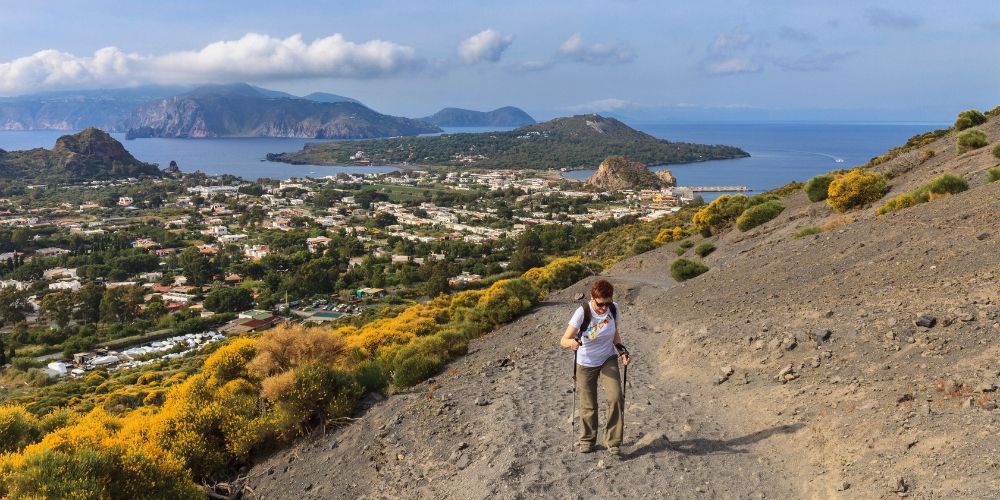
The Aeolian Islands represent a captivating and enigmatic destination where the interplay between archaic and contemporary elements is complex and entangled.
Despite any form of flattening and standardization, Lipari, Vulcano, Salina, Stromboli, Filicudi, Alicudi, and Panarea maintain distinct and venerable cultures and traditions that do not necessarily align with those of nearby territories.
Beaches of pebbles and black sand, spectacular volcanic eruptions, fishing villages, and irresistible marine views are all part of the package.
But there's much more, starting with the history that permeates old mule tracks, archaeological sites, and museums.
Those who take the time to talk to the locals can make exciting discoveries and enter a magical dimension populated by fantastic creatures and stories perceived as real.
Those looking for nature will encounter landscapes ranging from rugged and harsh to gentle and comforting.
Excited for your next Italian trip to Isole Eolie? Find out how to reach.
Many travellers decide to explore them all at once during a thrilling sailing holiday.
Here are a few tips for visiting the Aeolian Islands like a local.
Book unforgettable experience in Sicily10. What to do in the Aeolian islands like a local. Exploring Lipari
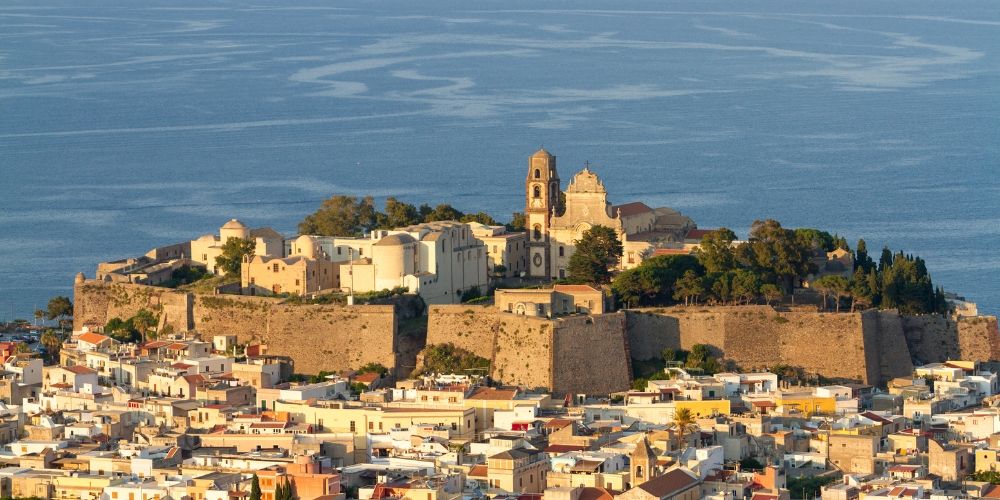
From the summit of a lofty volcanic rock, an imposing sixteenth-century fortress extends a cordial welcome to travellers preparing to disembark at Lipari.
Contemplate its breathtaking beauty from the Quattrocchi belvedere and the Geophysical Observatory, two privileged vantage points that any local will advise you to visit.
Once you've taken in the island from above, with its sea stacks and the hulking presence of Vulcano brooding in the background, it’s time to leave the lookout and dive into the heart of island life.
Beaches and bays are Lipari's main draw, a spellbinding succession of views that are so perfect they look almost crafted with AI.
Among those that most enchant visitors, the pristine expanse of Acquacalda stands out. The pumice stone lying on the shore makes the landscape look almost lunar. From the sea, the view of this stretch of coastline, with the towering white dune above, is simply staggering.
In between a hike to Valle Muria (a wild beach streaked with black and red volcanic sand), a stroll through the ancient Acropolis, and a visit to the excellent Aeolian Archaeological Museum, make time to gratify your palate too.For a sweet respite, indulge in cannoli, granita, sesame cookies, Aeolian 'gigi', and nacatole. Also, try some Sicilian cuisine classics like stuffed eggplants, pane cunzato and Lipari-style salad.
Get your tickets for Regional Aeolian Archeological Museum9. In Salina, like in a movie
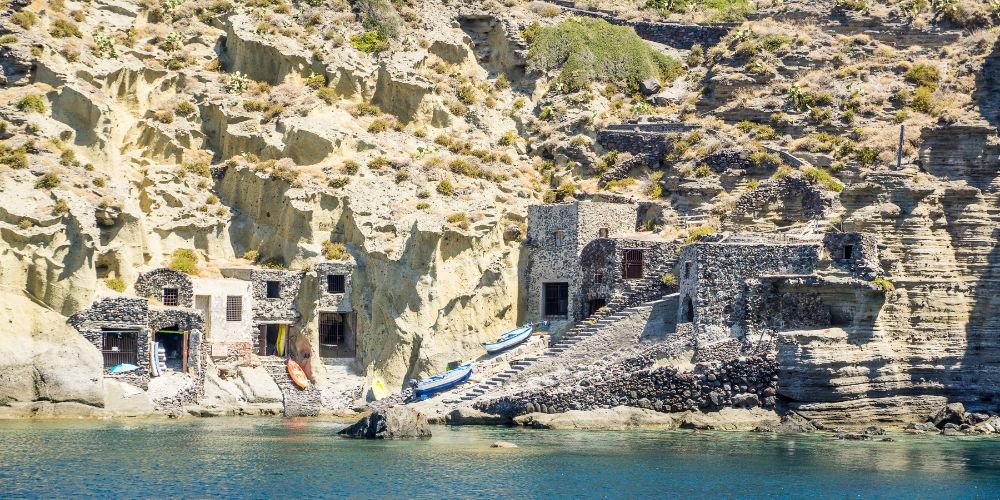
When 'Il Postino: The Postman' was released in 1994, it moved Italy and the world. The last movie starring Neapolitan iconic actor Massimo Troisi and directed by English filmmaker Michael Radford collected four nominations at the 1996 Oscars, clinching one for its soundtrack.
Besides romantic Procida, verdant and untamed Salina was the other location that brought to life the fishing island where the events set.
The scenes where Mario, the protagonist, traverses the coastal landscape on his bicycle were filmed in Pollara, a tiny hamlet cradled within the remnants of an ancient volcanic crater on the island’s north-western coast.
Today, the beach where Troisi and Philippe Noiret shared their most intense cinematic moments has considerably diminished. Yet, it is still crowded with tourists eager to behold a place etched into the collective imagination thanks to an unforgettable film.
The site is not only one of the archipelago's most evocative spots but also a prized destination for diving enthusiasts.
Continuing towards the edge of the hamlet, you'll find a typical Aeolian dwelling overlooking the bay: it was the rustic and secluded setting chosen to represent Pablo Neruda’s home.
8. Vineyard treks and Malvasia tastings in Salina
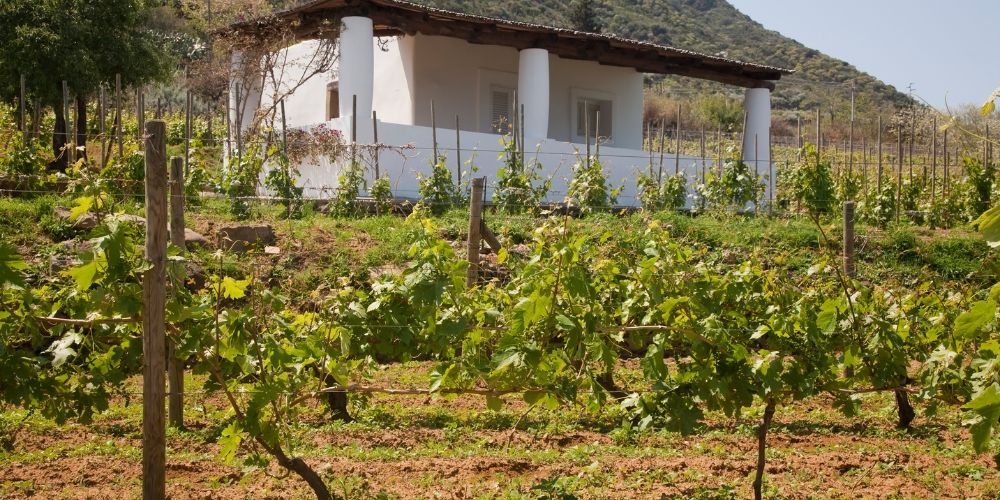
Salina, the greenest of the Aeolian Islands, is also renowned for its Malvasia, the sweet wine produced in the archipelago.
One of the most rewarding ways to explore the island’s landscape is a guided trek through the terraced vineyards that cascade down towards the sea.
The walking routes usually include visits to family-run wineries and small local producers. And more often than not, the experience ends with a tasting: glasses of golden Malvasia served alongside specialities like cucunci (the fruit of the caper bush, don’t mistake it for the classic caper) and pane cunzato, a rustic seasoned bread.
As summer gives way to autumn, activities around Salina get intense. September marks the peak season for the island’s wineries. In recent years, this passionate moment has been celebrated with Festa della Vendemmia, a lively harvest festival featuring tastings, walks, grape-picking experiences, performances, and open-air events for everyone.
Another highlight on the local wine calendar is Malvasia Day. Typically held in July, it's a summer celebration entirely dedicated to the island’s signature passito wine. What to expect: vineyards open to the public, tastings, and the chance to meet the producers behind the bottles.
For the latest updates on dates, events, and everything happening in Salina and across the Aeolians, head to Love Eolie.
7. Meeting Godzilla
Vulcano: black sand beaches, natural thermal springs, the picturesque village of Gelso with its abandoned lighthouse, the Levante harbour, the trails through the great crater of La Fossa. It's such a magic place to stay!
What if we told you your journey might even bring you face to face with creatures worthy of Godzilla or King Kong?
To the north-east of the Vulcanello peninsula lies a site known as Valle dei Mostri (Valley of the Monsters), a sandy area where lava boulders, sculpted by time and weather, loom like eerie beasts frozen in motion.
Figures resembling dinosaurs, bears, eagles and lions seem to keep watch, poised as if ready to pounce on unsuspecting passers-by.
At sunset, when the last rays of light illuminate the massive dark rocks, the spectacle is even more striking. Children are sure to be enchanted.
6. Having the best time in Panarea
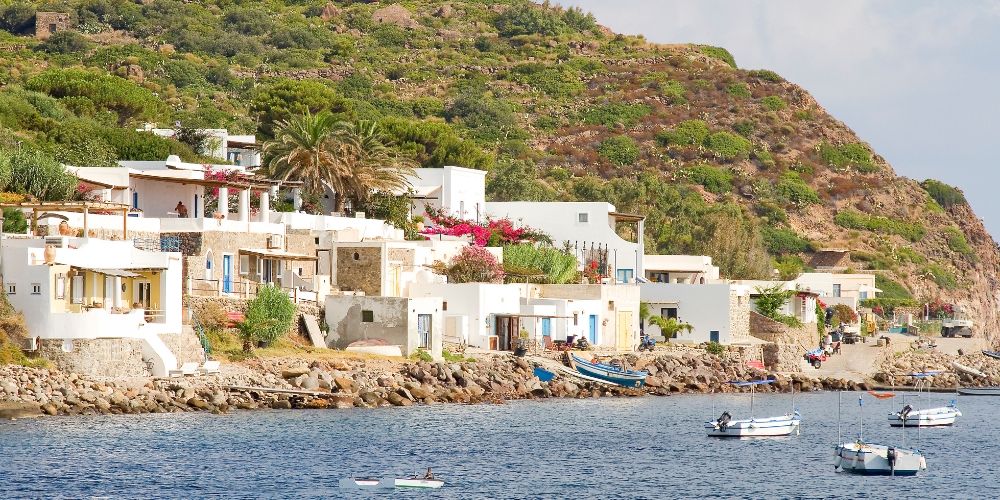
Tiny enough to explore in half a day, yet so ancient and rich in natural beauty that you’ll need far longer to truly take it in.
Boutiques, luxurious hotels, and glamorous hangouts, hallmarks of a classic high—society vacation, are certainly not lacking in Panarea. And yet, it’s the island’s rugged, rustic charm that steals the show.
Of course, its seascape is a marvel, with paradisiac coves and inlets of pebbles and stones. The seabed is incredibly fascinating if you're up for some diving. Also, you should try a boat excursion among the five uninhabited islets that mark the route to Stromboli.
On land, it's best to wear comfortable shoes because walking will take a lot.
For instance, you can get to the prehistoric village of Punta Milazzese, a window onto the ancient history of the Aeolian islands. For a deeper dive into the past, visit the Panarea branch of the Aeolian Archaeological Museum.
In general, Panarea boasts a series of well-marked itineraries, often relatively easy to traverse. Through these paths, you can circumnavigate the entire perimeter of the island. Choose one that leads you to Punta del Corvo to conquer the highest point.
5. Docking in a Guinness-record port
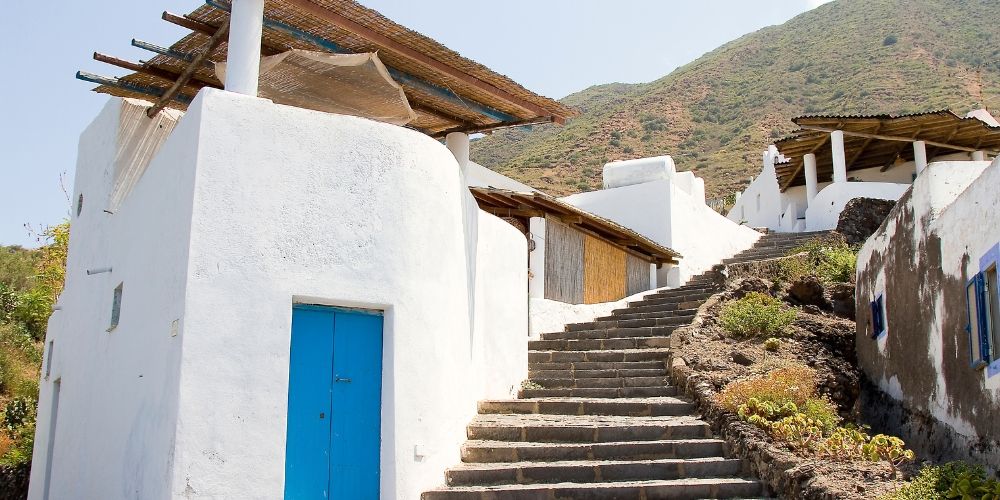
Ginostra is a tiny hamlet installed among volcanic rocks on Stromboli’s southwestern slope.
Accessible only by sea and connected to the village just a bit higher up by mule tracks still traversed by donkeys, it consists of a handful of dwellings and a harbour famous for being the smallest in the world.
'Il Pertuso' (the hole), as locals call it, has only recently been equipped with a pier for the docking of larger ships, ensuring a safe evacuation in case of natural disasters. However, the look and feel of the old port has remained practically unchanged, as does the timeless charm of this coastal outpost.
Needless to say, you won't see cars among its narrow streets overlooking the sea.
Several agencies in Stromboli organize daily excursions to Ginostra, from group tours around the island to personalized trips. Particularly appealing are the evening expeditions featuring sunset aperitif on board and dinner at a restaurant in Ginostra.
4. In a hidden spot in Filicudi
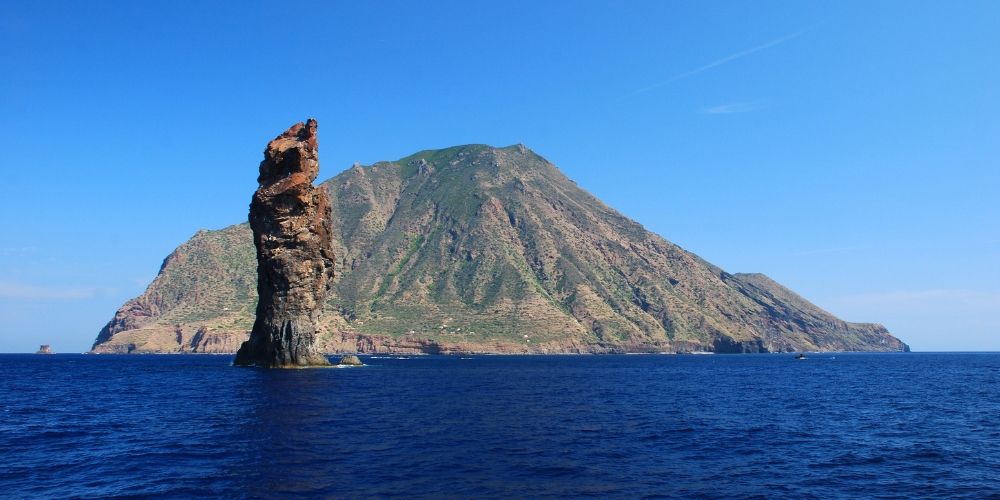
Just a short stroll from the port of Filicudi takes you to a place that offers a glimpse into the history of Aeolian craftsmanship.
This location is situated at the foot of Capo Graziano, a significant archaeological site encompassing a Bronze Age village.
Known as 'le Macine', the area sits on a cliff facing an underwater archaeological zone. Here lies a bunch of ancient millstones made of lava rock dating from the 19th to the early 20th century and used in the processing of wheat and olives. Some still bear the names of the artisans who made them.
Once sold and shipped to distant shores, these tools were a symbol of Filicudi and could once be found all over the island.
The path, except for the last downhill stretch, is easily traversable.
3. Taking a walk on Alicudi's wild side
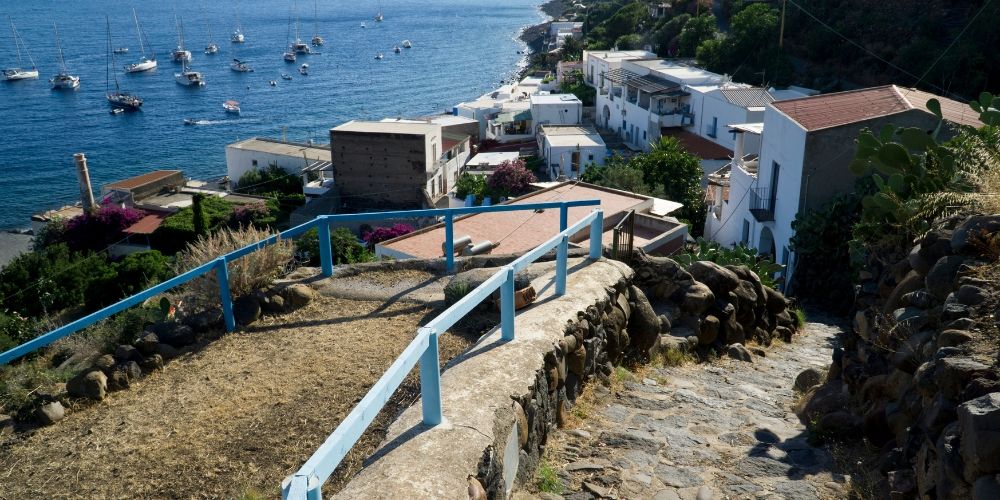
Alicudi is the most untouched and remote of the Aeolian Islands. There are more wild goats than humans (600 against 100 inhabitants), much of the island is uninhabited, restaurants and bars can be counted on one hand, and there are no cars around.
It’s a world apart quietly immersed in Mediterranean nature. Ghost stories are still told and somehow feel entirely believable in this strange and layered cultural mosaic.
Electricity is a recent addition, and street lighting is completely absent. Given the atmosphere, it's not so difficult to believe in eerie presences, flying women, and witches' Sabbaths, especially on certain dark nights.
The church of San Bartolo stands 300 meters above the sea in the eponymous district of which it is the sole 'inhabitant'.
Classic Aeolian architecture, featuring houses in soft colours, terraces with masonry seats, and columns, spreads over a rugged yet lush landscape. In Contrada Tonna, visitors may encounter some emblematic examples of the local construction style.
The paths connecting districts, houses clinging to the slopes, and cultivated lands are all on the eastern side.
In addition to the road along the coast, a series of steep ascents and broad lava-stone steps leads up to Filo dell’Arpa, the island’s highest point.
The few shops and grocery stores are clustered around the port area, where several signs advertise boat tours and rental services to reach otherwise inaccessible beaches.
Book experience in nature in Sicily2. Celebrating the Festa di San Bartolomeo in Lipari
Anyone arriving in the Aeolian Islands in late August will instantly sense the buzz in the air on Lipari. The island comes alive to honour San Bartolomeo, the patron saint of Lipari and protector of the entire archipelago.
While rooted in religious tradition, the celebration is, above all, a vibrant expression of Aeolian life. For a few unforgettable days, locals and visitors alike find themselves swept up in a shared sense of community and joy.
From 21 to 24 August, the streets light up with lanterns and market stalls, the scent of fried sweets wafts through the air, and the hum of voices lingers late into the night.
The climax comes on the 24th, with a grand procession through Lipari’s old town. The statue of the saint is carried through the narrow lanes on the shoulders of the island’s confraternities, accompanied by the precious vascelluzzo, a fine silver reliquary containing a fragment of Saint Bartholomew's skin.
The powerfully suggestive ritual draws pilgrims from across the Aeolian Islands and also curious travellers who plan their visit around the event.
As evening falls, the celebrations culminate in open-air concerts and a dazzling firework display over the sea. A fitting farewell to a festival that (faithfully) returns every year.
1. Joining a fishing tour in the Aeolian Islands
The Aeolian Islands have always lived in close harmony with the sea. One of the most authentic ways to experience them? Step aboard and let yourself be guided by those who know the waters and the islands as intimately as home.
Several local charters offer memorable fishing tours. Setting off at sunset, you'll head out to fish for squid, cast nets into the deep, and listen to stories spun from years at sea. Fancy learning how to tie a proper sailor's knot? That's on the cards too.
There's chatter, laughter, and hands-on work. And if the day's catch is generous, some tours even include the chance to cook and enjoy the freshest fish right on board. The organisers provide all the gear you'll need, so you only have to bring your curiosity (and maybe an appetite).
If fishing's not quite your thing, opt for a more classic boat trip. Options abound, from short scenic cruises to half-day adventures and even mini-voyages around the archipelago.
About the author
Written on 23/05/2024



Lorena Calise
Explore the Aeolian Islands like a local in 10 unforgettable stops. Get all our tips for the perfect Sicilian summer dream.